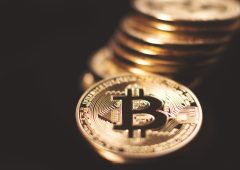Who is Actually Behind El Salvador’s Bitcoin Holdings?
14.03.2025 18:00 2 min. read Alexander Zdravkov
Recent reports suggest that El Salvador’s 6,114 BTC, claimed by the government, may actually be controlled by the crypto exchange Bitfinex.
Investigations point to over 80% of the Bitcoin being linked to Bitfinex wallets, with some funds routed through Chivo Wallet. This raises questions about whether El Salvador is misrepresenting its Bitcoin holdings, with researcher Mario Gómez speculating that the funds could have been loaned or donated by Bitfinex, rather than directly owned by the government.
El Salvador’s close ties to Bitfinex and its sister company Tether are well known, as the government has worked with them on various projects, including Bitcoin purchases and crypto-related services.
As part of a deal with the IMF, El Salvador has agreed to disclose more details about its Bitcoin holdings, which may provide further clarity on the situation. However, for now, the true control of the country’s Bitcoin remains unclear.
These revelations come amid ongoing scrutiny over El Salvador’s controversial Bitcoin adoption. The government’s push to integrate Bitcoin as legal tender has faced both local and international skepticism.
While Bukele’s administration touts the move as a financial revolution, critics argue that the government’s reliance on external entities like Bitfinex and Tether complicates the narrative, potentially undermining the sovereignty of El Salvador’s crypto assets. The IMF agreement is seen as an opportunity to address some of these concerns and provide transparency on the country’s Bitcoin strategy moving forward.
-
1
Ethereum Loses Retail Momentum as Bitcoin Pulls Ahead
20.06.2025 21:00 1 min. read -
2
Corporate Bitcoin Buying Accelerates as Firms Raise Billions to Stack BTC
22.06.2025 15:00 2 min. read -
3
Retail Mood Turns Sour—And That Could Be Bullish for Bitcoin, Says Analyst Firm
21.06.2025 19:00 1 min. read -
4
Here is What Robert Kiyosaki Expects From Bitcoin Until 2030
20.06.2025 20:00 1 min. read -
5
Strategy Scoops Up Another 10,100 Bitcoin, Treasury Nears 600K BTC
16.06.2025 16:15 1 min. read
Which Is the Next Bitcoin Price Target?
Bitcoin could be on the verge of another major breakout as institutional inflows return to levels that historically trigger rapid price acceleration.
Bitcoin Enters new Discovery Phase as Profit-Taking Metrics rise and outflows dominate
According to on-chain analyst Darkfost, Bitcoin is entering a new stage of on-chain behavior marked by two key developments: a rare third peak in the SOPR Trend Signal during a single bull cycle and a sustained outflow dominance in exchange flows.
This Week in Crypto: Whale Accumulation, Ethereum Signals, and a Sentiment Shake-Up
According to the latest Santiment report, the crypto market is entering a critical phase, with a mix of bullish on-chain signals and cautionary sentiment indicators.
Mysterious $8.6B Bitcoin Transfer Sparks Speculation Over Satoshi-Era Wealth
In a stunning on-chain event that has reignited curiosity across the crypto community, more than $8.6 billion worth of Bitcoin linked to the network’s earliest years—commonly referred to as the “Satoshi era”—was quietly moved on Friday in what analysts believe is the largest single transfer of early-mined BTC ever recorded.
-
1
Ethereum Loses Retail Momentum as Bitcoin Pulls Ahead
20.06.2025 21:00 1 min. read -
2
Corporate Bitcoin Buying Accelerates as Firms Raise Billions to Stack BTC
22.06.2025 15:00 2 min. read -
3
Retail Mood Turns Sour—And That Could Be Bullish for Bitcoin, Says Analyst Firm
21.06.2025 19:00 1 min. read -
4
Here is What Robert Kiyosaki Expects From Bitcoin Until 2030
20.06.2025 20:00 1 min. read -
5
Strategy Scoops Up Another 10,100 Bitcoin, Treasury Nears 600K BTC
16.06.2025 16:15 1 min. read


